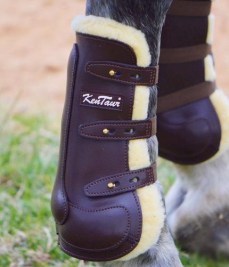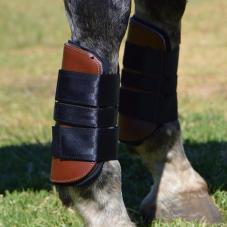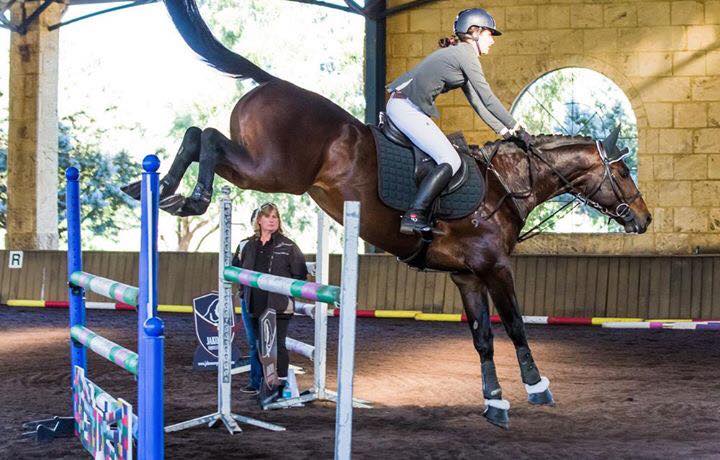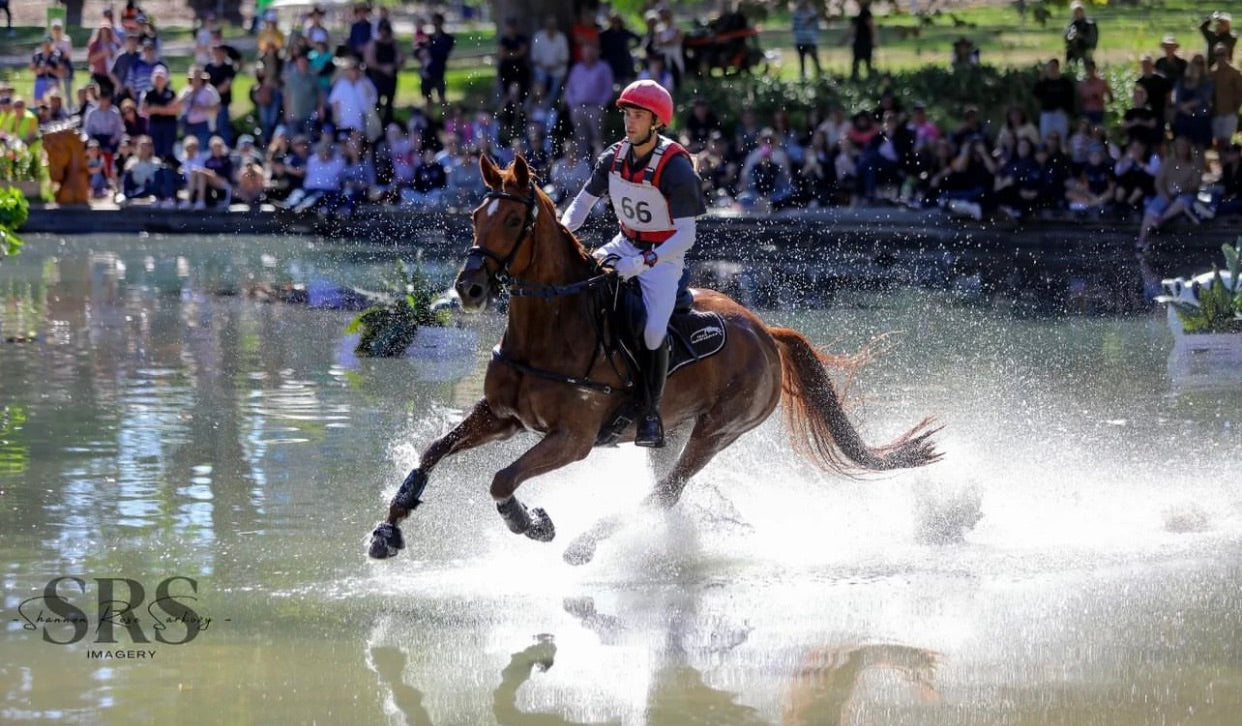Choosing the right show jumping boots for your horse can be an arduous process… Not only are there hundreds of brands out there, but the different types and materials mean that there are seemingly endless options. Armed with the knowledge of the functions of the boots as well as your own personal preferences, this choice can become a lot easier!
The main purpose of jumping boots is to help protect the legs of the horse from abrasions and strikes (i.e. from poles and their own legs). They can also add to the style element of the overall picture, which, depending on personal taste, may or may not matter to you.
In show jumping, the most common type of front boot is the ‘open front’ boot that offer protection along the side and back of the cannon bones but are open in front (this helps increase sensitivity to hitting rails), and shorter ‘fetlock’ boots for the hind legs to help protect should the fetlocks brush together.

So what are some of the options you have when it comes to show jumping boots?
• Leather boots V Synthetic boots: There is no doubt that leather jumping boots are both highly stylish as well as more traditional-looking than boots made of synthetic materials such as neoprene or plastic. They mold well to the leg and can often provide better protection, as well as being more long-lasting (and easier to repair from a tack repair person). However, they require more maintenance through cleaning and oiling, as well as drying after rain. Synthetic boots are lighter and can be thrown straight into the washing machine!

These are just some of the options you have when it comes to choosing show jumping boots. It’s also important to consider the fit of the boots, as incorrectly fitted boots can cause discomfort to the horse (and sometimes even lead to injury). Always strap show jumping boots with the fasteners done up on the outside of the leg, tightened with enough pressure that one finger can fit between the boot and the horse’s leg. You don’t want to restrict blood flow or have it so loose that it slips! Boots should also be removed as quickly as possible following exercise to avoid too much heat building up in the leg.
In terms of the care of your jumping boots, this usually comes down to what materials they’re made of. Synthetic and neoprene boots can be simply washed down or thrown in the washing machine, whilst leather boots should be wiped down with a quality product once a week (or more if excessive sweating).
At the end of the day it is definitely still a highly personal choice! Here at Kentaur Australia, we like to use our synthetic Kentaur ‘Profi’ boots or Kentaur ‘Easy Jump’ Boots for the young horses and everyday riding, and then use the Kentaur ‘Carmona’ Boots for competition… How do you choose your show jumping boots?
• Velcro v Buckles: In terms of the actual boot straps, the majority of show jumping boots come with either Velcro or buckled straps. Whilst Velcro can be easier to apply and more adjustable, they can also become worn over time and lose some of their ‘stickability’. Buckles are perhaps a more traditional and stylish look, however can offer less adjustability. Another common form of boot strap is hook and stud closures, which give a sleek look but again offer slightly less adjustability.

• Sheepskin V Neoprene lining: Inner lining on show jumping boots can provide an additional level of comfort, and is especially important for sensitive skinned horses such as chestnuts and greys. Sheepskin or fleece lining is soft and stylish, but can be hard to keep clean! Removable liners, such as that seen in our Kentaur ‘Oxford’ jumping boots, can help with this; the sheepskin is easily washed when removed (and can be replaced with the neoprene lining), meaning the sheepskin can be saved for shows. Neoprene lining by itself can also provide comfort and support, helping to protect against rubbing.

• Cut: Boots with an anatomical cut can help reduce to pressure points and provide extra comfort. Look for boots with a shaped shell that contours around the horses leg; stiff and unshaped boots can cause discomfort.
• Performance enhancing boots: as well as for protection purposes, there are also a range of show jumping boots that can aid in improving performance. Pinch/pressure boots and weighted boots, when used properly, can help improve the technique, carefulness and strength of jumping horses. You can read more about this at at our blog post ‘How and When to use Performance Enhancing Boots‘.

These are just some of the options you have when it comes to choosing show jumping boots. It’s also important to consider the fit of the boots, as incorrectly fitted boots can cause discomfort to the horse (and sometimes even lead to injury). Always strap show jumping boots with the fasteners done up on the outside of the leg, tightened with enough pressure that one finger can fit between the boot and the horse’s leg. You don’t want to restrict blood flow or have it so loose that it slips! Boots should also be removed as quickly as possible following exercise to avoid too much heat building up in the leg.
In terms of the care of your jumping boots, this usually comes down to what materials they’re made of. Synthetic and neoprene boots can be simply washed down or thrown in the washing machine, whilst leather boots should be wiped down with a quality product once a week (or more if excessive sweating).
At the end of the day it is definitely still a highly personal choice! Here at Kentaur Australia, we like to use our synthetic Kentaur ‘Profi’ boots or Kentaur ‘Easy Jump’ Boots for the young horses and everyday riding, and then use the Kentaur ‘Carmona’ Boots for competition… How do you choose your show jumping boots?

You can view the KenTaur range of show jumping boots here.





